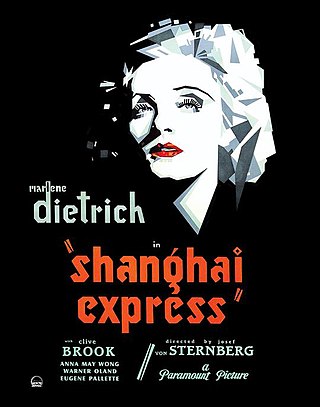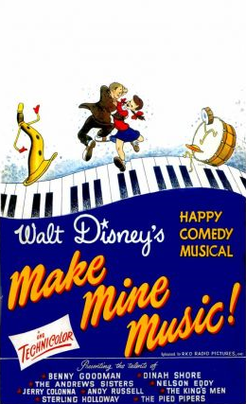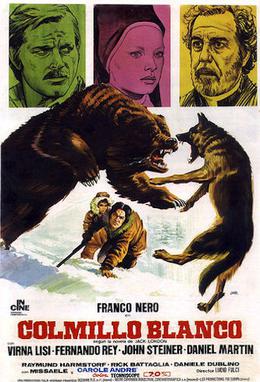
Shanghai Express is a 1932 American pre-Code film about a group of train passengers held hostage by a warlord during the Chinese Civil War. It was directed by Josef von Sternberg and stars Marlene Dietrich, Clive Brook, Anna May Wong and Warner Oland. The screenplay was written by Jules Furthman based on a 1931 short story by Harry Hervey. Shanghai Express was the fourth of seven films that Sternberg and Dietrich created together.

The Band Wagon is a 1953 American musical romantic comedy film directed by Vincente Minnelli, starring Fred Astaire and Cyd Charisse. It tells the story of an aging musical star who hopes a Broadway show will revive his career. However, the play's director wants to make it a pretentious retelling of the Faust legend and brings in a prima ballerina who clashes with the star. Along with An American in Paris (1951) and Singin' in the Rain (1952), it is regarded as one of the finest Metro-Goldwyn-Mayer musicals, although it was a box-office disappointment on first release.

The Call of the Wild is a short adventure novel by Jack London, published in 1903 and set in Yukon, Canada, during the 1890s Klondike Gold Rush, when strong sled dogs were in high demand. The central character of the novel is a dog named Buck. The story opens at a ranch in Santa Clara Valley, California, when Buck is stolen from his home and sold into service as a sled dog in Alaska. He becomes progressively more primitive and wild in the harsh environment, where he is forced to fight to survive and dominate other dogs. By the end, he sheds the veneer of civilization, and relies on primordial instinct and learned experience to emerge as a leader in the wild.

A wolfdog is a canine produced by the mating of a domestic dog with a gray wolf, eastern wolf, red wolf, or Ethiopian wolf to produce a hybrid.

White Fang is a novel by American author Jack London (1876–1916) about a wild wolfdog's journey to domestication in Yukon Territory and the Northwest Territories during the 1890s Klondike Gold Rush. First serialized in Outing magazine between May and October 1906, it was published in book form in October 1906. It is a companion novel to London's best-known work, The Call of the Wild (1903), which is about a kidnapped, domesticated dog embracing his wild ancestry to survive and thrive in the wild.

White Fang is a 1991 American northern period adventure drama film directed by Randal Kleiser, and starring Ethan Hawke, Klaus Maria Brandauer, and Seymour Cassel. Based on Jack London's novel of the same name, the film tells the story of the friendship between a young Klondike gold prospector and a wolfdog. White Fang is portrayed by a wolfdog, Jed, who also appeared in such films as The Thing (1982) and The Journey of Natty Gann (1985). The film was released on January 18, 1991, by Buena Vista Pictures. A sequel to the film, White Fang 2: Myth of the White Wolf, was released in 1994.

The Journey of Natty Gann is a 1985 American adventure film directed by Jeremy Paul Kagan, produced by Walt Disney Pictures and released by Buena Vista Distribution. The film introduced Meredith Salenger and also starred John Cusack, Lainie Kazan and Ray Wise.

Make Mine Music is a 1946 American animated musical anthology film produced by Walt Disney and released by RKO Radio Pictures on April 20, 1946.

Balto II: Wolf Quest is a 2002 American animated adventure film produced and directed by Phil Weinstein. It is the sequel to Universal Pictures/Amblin Entertainment's 1995 Northern animated film Balto.

Never Cry Wolf is a 1983 American drama film directed by Carroll Ballard. The film is an adaptation of Farley Mowat's 1963 "subjective non-fiction" book. The film stars Charles Martin Smith as a government biologist sent into the wilderness to study the caribou population, whose decline is believed to be caused by wolves, even though no one has seen a wolf kill a caribou. The film also features Brian Dennehy and Zachary Ittimangnaq.

Power Rangers Jungle Fury is the sixteenth season of the American television series Power Rangers, and is an adaptation of Juken Sentai Gekiranger, the thirty-first Japanese Super Sentai series.

The Indian Fighter is a 1955 American CinemaScope and Technicolor Western film directed by Andre de Toth and based on an original story by Robert L. Richards. The film is the first of star Kirk Douglas's Bryna Productions that was released through United Artists. The film co-stars Elsa Martinelli, Walter Matthau, Kirk Douglas's ex-wife Diana Douglas and Walter Abel.

The Return of Dracula is a 1958 American horror film directed by Paul Landres, and starring Francis Lederer, Norma Eberhardt, and Ray Stricklyn. It follows Dracula, who murders an artist aboard a train in Central Europe, and proceeds to impersonate the man, traveling to meet with his extended family in a small California town. The film is primarily in black and white, aside from one brief color sequence.

White Fang is a 1973 Italian Northern adventure film directed by Lucio Fulci and produced by Harry Alan Towers. The screenplay by Roberto Gianviti was based on Jack London's 1906 novel White Fang. The film, starring Franco Nero, Fernando Rey and Virna Lisi, gained great commercial success and generated an official and several unofficial sequels.

Challenge to White Fang is a 1974 Italian Northern adventure film directed by Lucio Fulci. It is a sequel to Fulci's White Fang (1973), as part of a trend inspired by Call of the Wild (1972), which was a surprise hit in Italy. Two German productions in this trend were Hellhounds of Alaska and Cry of the Black Wolves, both directed by Harald Reinl.

Giubbe rosse, internationally released as Cormack of the Mounties, Killers of the Savage North, Red Coat and Royal Mounted Police, is a 1975 Italian adventure film co-written and directed by Joe D'Amato. It is part of a brief series of films that tried to market the commercial success of Lucio Fulci's White Fang presenting very similar plots and settings. D'Amato co-wrote the film with writer/actor George Eastman, who went on to star in a dozen or more D'Amato films.
Jed was a Pacific Northwestern American animal actor, known for his roles in the movies White Fang (1991), White Fang 2: Myth of the White Wolf (1994), The Journey of Natty Gann (1985), and The Thing (1982). He was born in 1977 and died in June 1995. He was a Vancouver Island wolf-Alaskan Malamute hybrid.

White Fang is a 2018 animated film directed by Alexandre Espigares. Based on the 1906 book White Fang by Jack London, the film features the voices of Nick Offerman, Rashida Jones, Paul Giamatti, and Eddie Spears as natives of Alaska who, at different times, come to know White Fang, a free spirited and at times violent wolfdog who eventually bonds with Offerman's character, a gentle master named Weedon Scott. The film also features Dave Boat, Daniel Hagen, and Stephen Kramer Glickman in the original English version, and Virginie Efira, Raphaël Personnaz, and Dominique Pinon in the French dub.

White Fang is a 1925 American silent Western film directed by Laurence Trimble and featuring Theodore von Eltz, Ruth Dwyer, and Matthew Betz. It was produced by FBO Pictures as a starring vehicle for Strongheart, an Alsatian who appeared in a number of films during the decade. It is based on the 1906 novel White Fang by Jack London.


















